

| Home | For sale | Site map | Contact information | Guest book | Lafette-menu |
 The
evolution of the Lafette 34 The
evolution of the Lafette 34  |
|---|
General Information
The transmission from Lafette 34 production to Lafette 42 production took place from 1942 to 1944. I have chosen to divide this article in two parts. The first part (this one) will cover the period from 1936 to 1944 for the Lafette 34. The second one (Evolution of the Lafette 42) will cover the period from 1942 to 1945 for the Lafette 42. To keep track of the manufacturers I use their (short) company name, even though it was coded on the actual product. As an example, the Laying- and Search fire mechanism normally marked cql was manufactured by Heinrich H Klüssendorf Werkzeuge, Berlin-Spandau. The maker used four (known) different ways to mark their products. They could be marked with a square with the letters HHK inside, simply with the numbers "30", with the code cql or with the date "RE" (only used by cql). I will only refer to them as Klüssendorf. See the article about Markings for more information about the subject of markings and codes. The connection between the Laying- and Search fire mechanism used on the different manufacturers Lafettes is not a complete study. I merely list those I have studied. The manufacturers The list of registered manufacturers of the Lafette 34 below is based on studies of rear covers, and may not be complete in terms of years of production. Always grateful for corrections!
The Laying- and Search fire mechanism was manufactured by subcontractors
1936 The first year of production. The only registered manufacturer was Excelsior. All Lafettes manufactured later derives from this. This is the mother of all Lafettes. 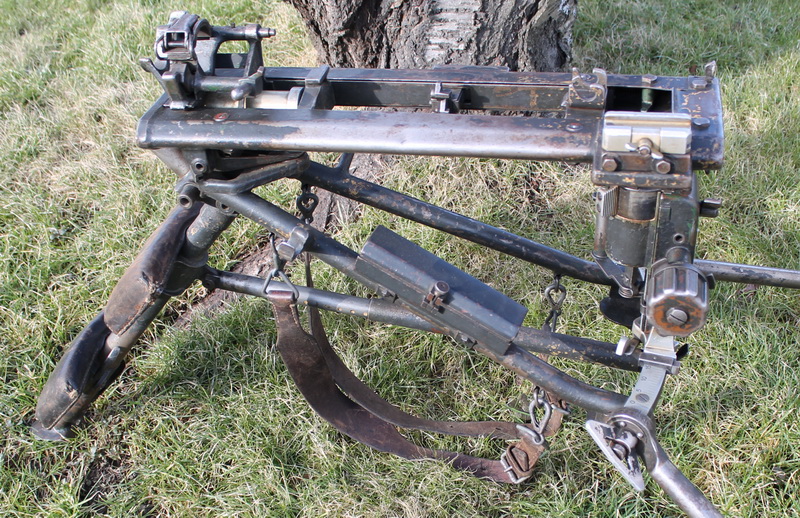 The 1936 Lafette has no serial number. Of special note in this picture; the bolt box was not originally supplied with this mount but was added post 1940 as it wasn't invented in 1936, and the Lafette has been field repainted. This Lafette has one special feature that was later dropped. The four bolts in the cradle that hold the rollers guiding the recoiling frame with the weapon mounts have a mechanism that allow the rollers to be oiled. A spring pressured ball could be depressed to allow lubrication. These bolts were normally painted red by the units. 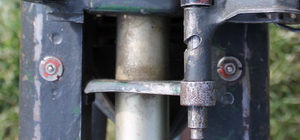 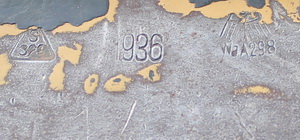 The Laying- and Search fire mechanism is unmarked, so it is assumed that is was made at the same factory as the Lafette. 1937 The second year of full production, and Excelsior is still the only documented manufacturer. The Lafettes have no serial number. 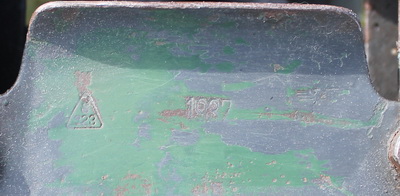 No (observed) design changes or alterations from 1936. The 1936 and the 1937 manufactured Lafettes appears to be identical, but they do have a few design "flaws" that will be rectified in the year to come. 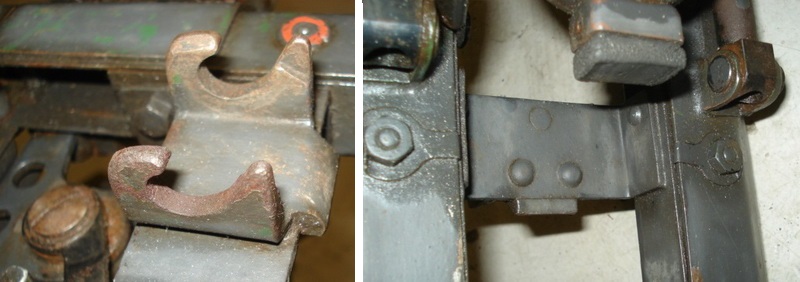 Above left the first model of the rear weapon mount, right picture show the same part from below. The first model of the rear weapon mount is too weak. It consists of two stamped parts, riveted together and again riveted to the recoiling frame with weapon mounts. Prolonged use will make the rivets come loose. 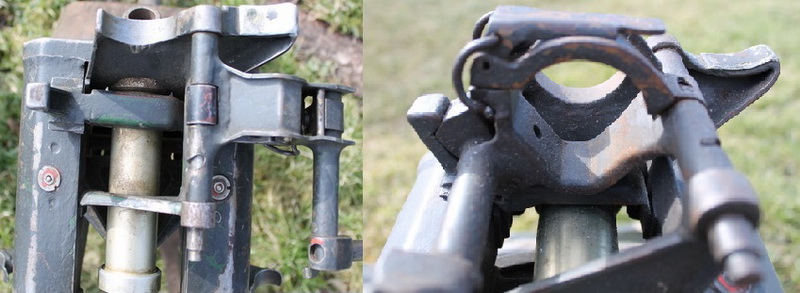 The forward weapon mount consists of stamped and welded parts, and an extra cross support bar is present. The catch is of a hollow stamped construction. 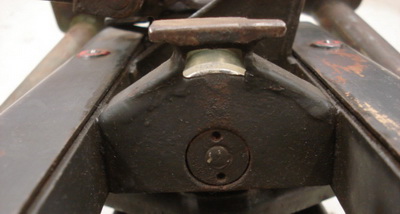 The rear buffer mount is made of stamped and welded parts riveted to the recoiling frame with weapon mounts. Note the gap between the weapon rest and the buffer mount. 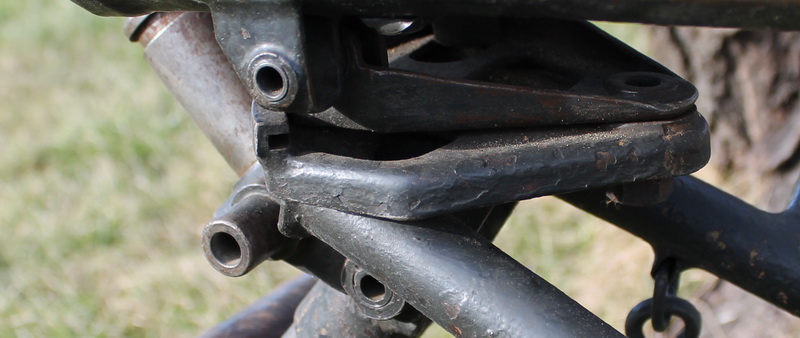 There is no support bracket between the frame tubing and the lower part of the turntable (the triangular bracket to the upper front of the frame). The Laying- and Search fire mechanism is still completely without markings. 1938 A bigger demand for Lafettes brings a second manufacturer. The documented manufacturers in 1938 are Excelsior and Schönebeck. The Lafettes are being serial numbered, and the production of the Laying- and Search fire mechanism is now outsourced. Improvements and experience leads to product changes. 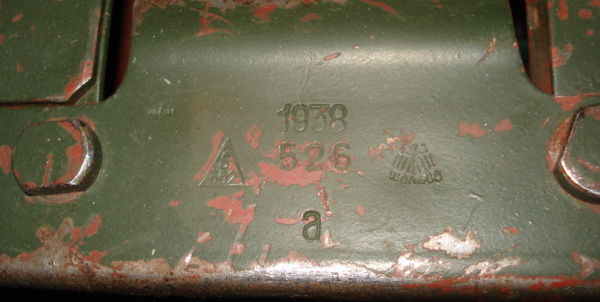 Both manufacturers are serial-numbering their Lafettes. 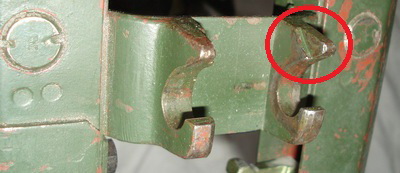 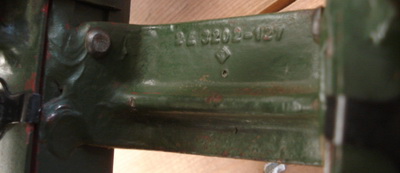 The rear weapon mount is now cast in one piece and milled, and fastened to the recoiling frame with rivets and welding. Note the cut-out on the forward teeth. The rear grip frame bolt on the MG34 would not fit in this bracket without this milling. This is the way to see if the rear weapon mount was made for the MG34 or for the MG42.  The forward weapon mount changes from "stamped & welded" to "cast & milled". It is unclear if the change was due to a weakness in the forward weapon mount, or the cost of production. 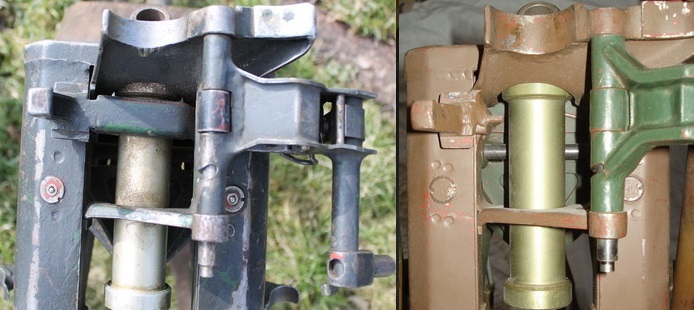 The hollow catch with its crossbar is replaced with a solid one, welded directly to the recoiling frame. The lubrication option for the roller bolts was discontinued, as these are replaced with solid bolts.  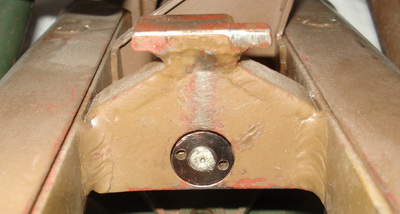 The rear buffer mount is made more solid and is welded to the recoiling frame.  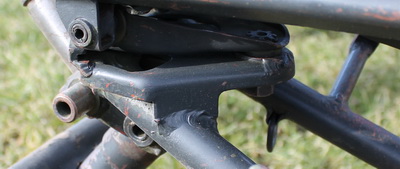 There is now a support bracket between the frame tubing and the lower part of the turntable to stiffen it Both Excelsior and Schönebeck uses a Laying- and Search fire mechanism manufactured by Klüssendorf. 1939 Production continues with Excelsior and Schönebeck, while a new manufacturer with no code, SWITZ, starts their production. There are no visible design-changes from the previous year except for the paintwork, but changes in materials take place. Aluminum is now becoming a restricted metal, as it is needed for the aircraft industry 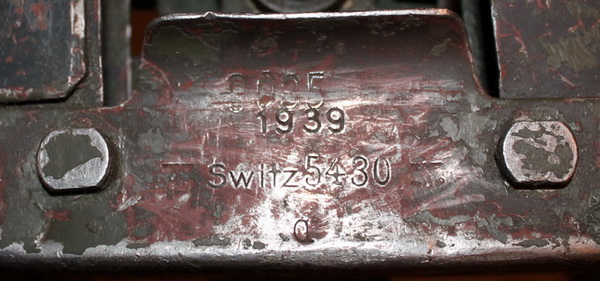 SWITZ (Siemens Elektrowärmer G.m.b.H., Werk Sörnewitz) only manufactured the Lafette in 1939 and 1940, before they again switch their production to other items. 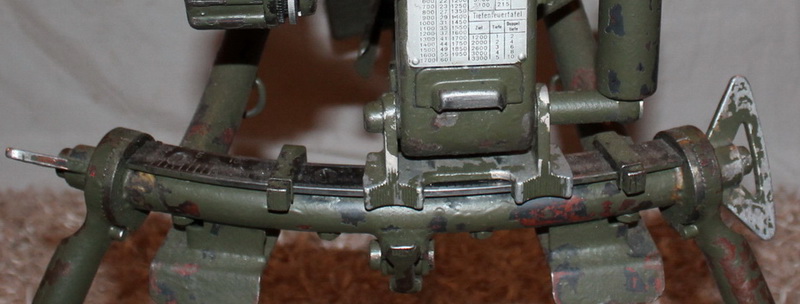 The SWITZ Lafette is identical to the other manufacturers Lafettes save for one detail. The rear arc is made of blued steel with white painted numbers and lines. The standard on all Lafettes up to then had been aluminum. 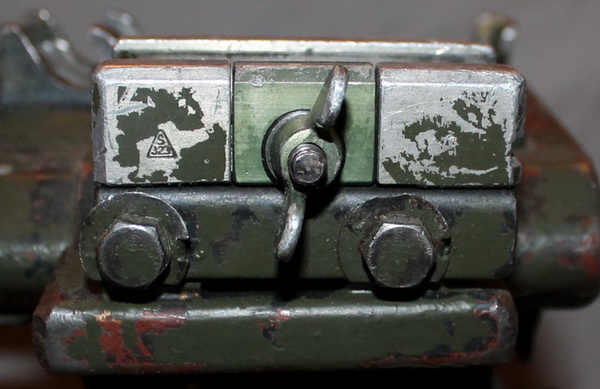 SWITZ also used subcontractors for some components. The Laying- and Search fire mechanism was made by Linden & Funke and the optic block was made by Excelsior.  The Laying- and Search fire mechanism manufactured by Klüssendorf exchanged the aluminum slider for a painted steel one. Excelsior continued to use aluminum arcs. 1940 Production continues with Excelsior, Schönebeck, Hülsbeck & Fürst and SWITZ. The later changes their marking from the acronym SWITZ to the old coding system with the number "993". 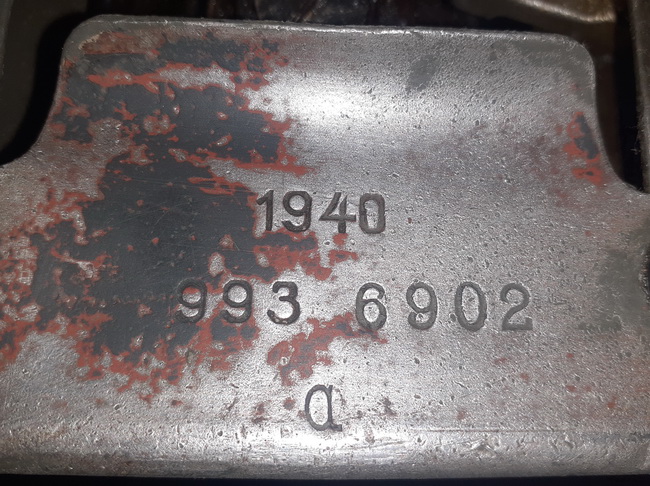 (Picture courtesy of P. Way) 1940 brings two new inventions to the Lafette; the bolt box and the spent shell deflector tray. These items can be found on earlier dated Lafettes, but they are retro-fitted post 1940 by Waffenmeisters (or even postwar). The factories didn't include them until 1940. There is one design-change from the previous year, and changes in materials continue. For unknown reasons several (but far from all) Excelsior Lafettes are delivered without serial numbers. A close to mint Excelsior 1940 Lafette. Note the deflector tray riveted to the left inside of the recoiling frame and the bolt box. Also of interest are the markings inlaid with white paint by the factory and the missing serial number. 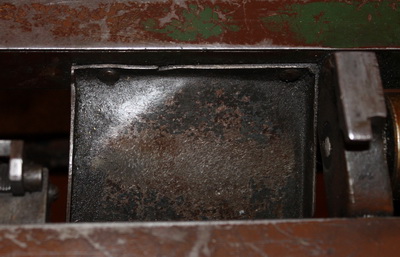 The riveted deflector tray as introduced in 1940. Note the depression in the upper left corner. The picture to the right shows a typical Waffenmeister tray retro-fitted on a 1937 dated Lafette. The design change that takes place during 1940 is hard to notice at first glance. The turntable is totally redesigned.  The early version had four supports for the turntable axle (upper right picture), the later version has only got two, but separate profiles are welded on for support, and a large circular hole was removed in the center to keep the weight down.  Late in 1940 the lower (adjustable) backpad is redesigned. It was probably easily bent, so the supporting bracket was lengthened to make it sturdier. Excelsior changes to steel arcs, and Hülsbeck & Fürst uses the same, while Schönebeck continues with aluminum. The Laying- and Search fire mechanism for the Schönebeck Lafettes were made by Klüssendorf and Brunsviga-Maschinenwerke, while Excelsior used mechanisms manufactured by Klüssendorf, Brunsviga-Maschinenwerke and Linden & Funke. Hülsbeck & Fürst got theirs from Klüssendorf (coded "30"). 1941 Production continues with the makers Excelsior, Schönebeck and Hülsbeck & Fürst. No changes to the production of the Lafette can be found. Going through my own computer I stumbled over photos of two different Schönebeck Lafettes previously in my own collection at different times. 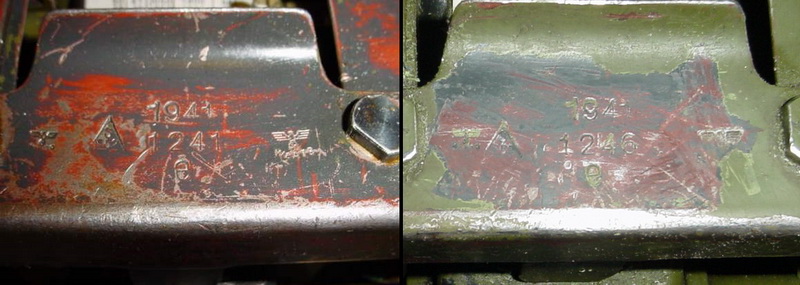 As an incredible coincidence, both Schönebeck Lafettes are in the "e" range with only 4 numbers dividing them. The Schönebeck arcs change from aluminum to steel. 1942 Production continues with Excelsior and Schönebeck. No 1942 dated Hülsbeck & Fürst Lafette has been observed so far, but Fouquet & Franz, a new contractor enters the arena. The company Fouquet & Franz manufactured their Lafettes with Laying- and Search fire mechanisms manufactured by Werbig. The Fouquet & Franz Lafettes are again identical with the others, but they can be recognized most of the time by their extremely industrial-grade green aluminum details.
1943 A year with many changes. The only registered manufacturers of Lafette 34s in 1943 are Fouquet & Franz and Schluckebier, a new company. Lafettes manufactured early in 1943 have the same aluminum parts as the previous year, but almost all of them are replaced with steel parts during the production year. 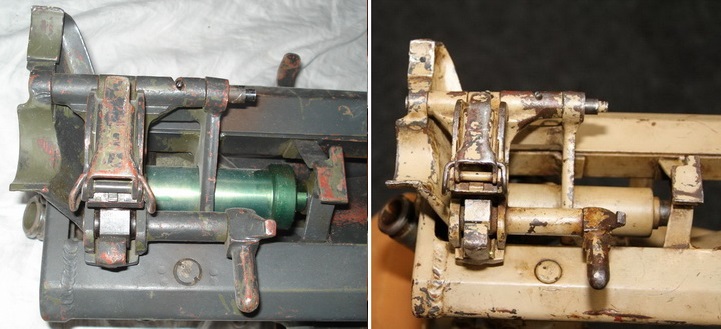 The buffer spring housing in aluminum was exchanged for a thinner tube in painted steel 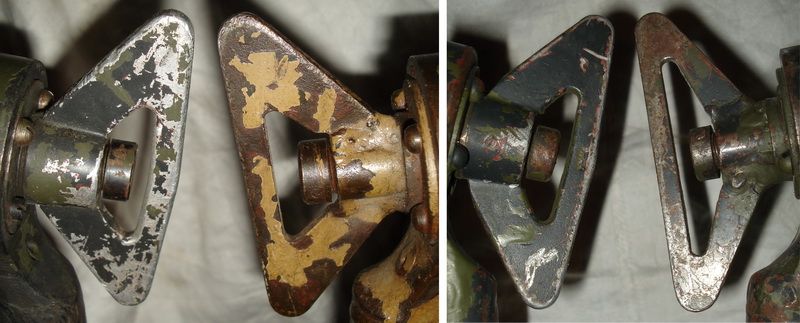 The wing nuts that fasten the rear legs change from aluminum to steel (two different shapes) It is easy to tell them apart even if they are covered in paint, as the steel ones have large welding seams to each side. 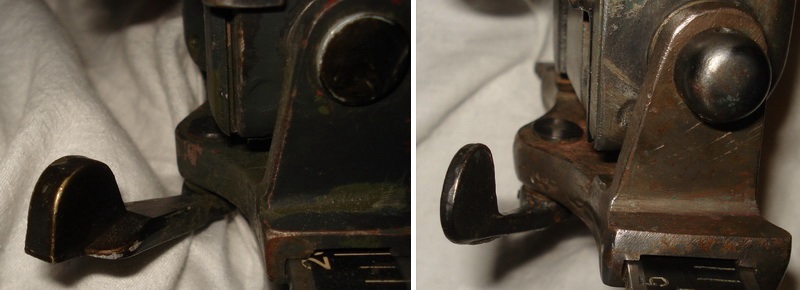 The locking lever for the Laying mechanism changes from aluminum to a thin steel profile 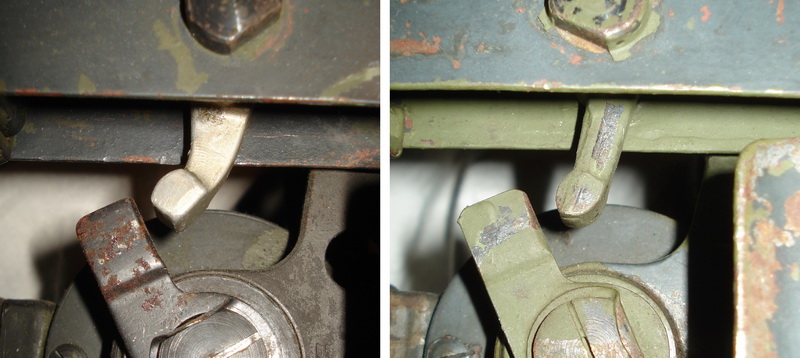 The leverage arm for the trigger mechanism changes from aluminum to steel 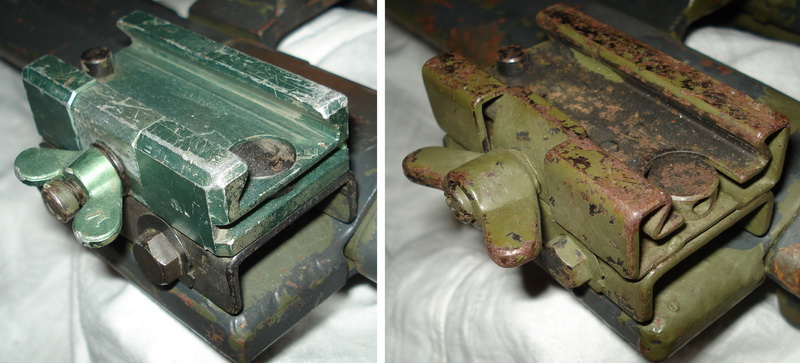 The aluminum optic mount is exchanged for one made of stamped steel with a larger wing nut  The take-down lever is moved from the top position to the lower position. At the same time the aluminum block that contains parts of the locking mechanism is exchanged for a smaller one made of steel. On the Schluckebier Lafettes this feature is incorporated from the start of production, while the Fouquet & Franz Lafettes change this feature between serial 937a (top mounted) and 1664a (lower mounted). The stock of rear covers must have been good at Fouquet & Franz, because the cut for the top mounted take-down lever is still present (with no function) at serial number 1876a 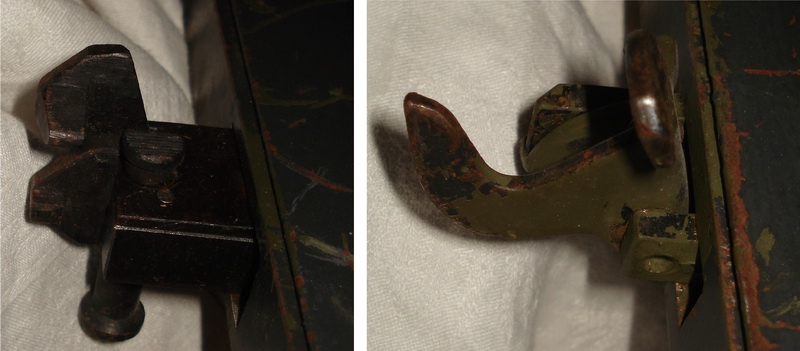 The trigger mechanism on Schluckebier Lafettes changes from the selective fire trigger to full auto only between serial number 2427h and 3140h. Fouquet & Franz only manufactured Lafettes with the selective fire trigger 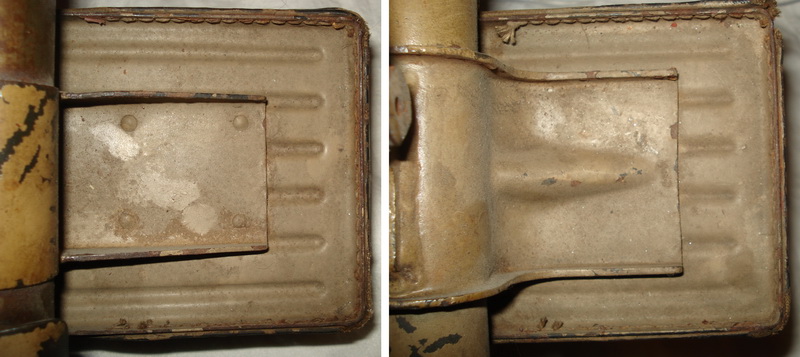 The mounting brackets on the rear of the back pads was riveted until 1943. To simplify the manufacturing process they are spot-welded from 1943 and onwards. 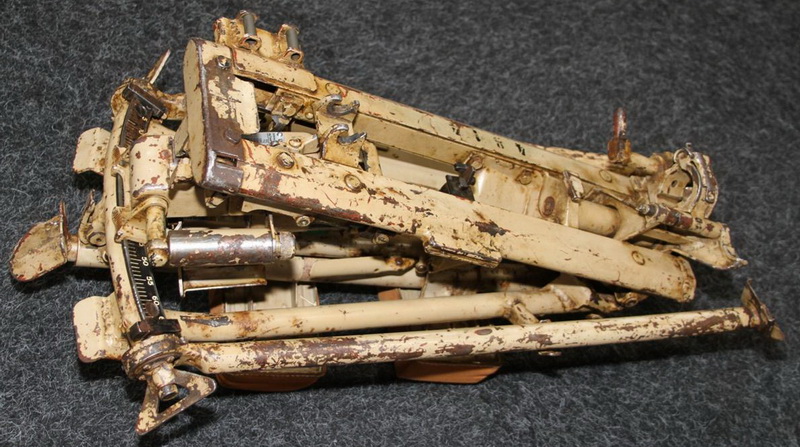 The color changes from Dunkelgrau to Dunkelgelb. At the Fouquet & Franz factory this change takes place between serial number 1706a and 1876a. So far, only one Lafette 34 has been observed in factory applied Dunkelgelb. Note the cut for the top mounted take-down lever, not in use. The only aluminum part still in use by the end of the year is the selector lever for the search fire mechanism. The search fire mechanism is still made of a light alloy. The Mountain Lafette The production year 1943 also brought a new invention; the extendable & adjustable rear legs. The correct German name was "Hinterstützen neuerer Fertigung" (New model of rear legs), but they are also referred to as "Ausziehbaren Hinterstützen" (Extendable rear legs). For some unknown reason Lafettes with these legs are today mostly referred to as Mountain Lafettes, but I am unable to find any connection to mountain use or delivery to "Mountain units". The first appearance of the adjustable rear legs I have been able to find is in the manual D124/2 Maschinengewehr 34, Teil 2, MGLafette 34. Dated 5. 3. 43 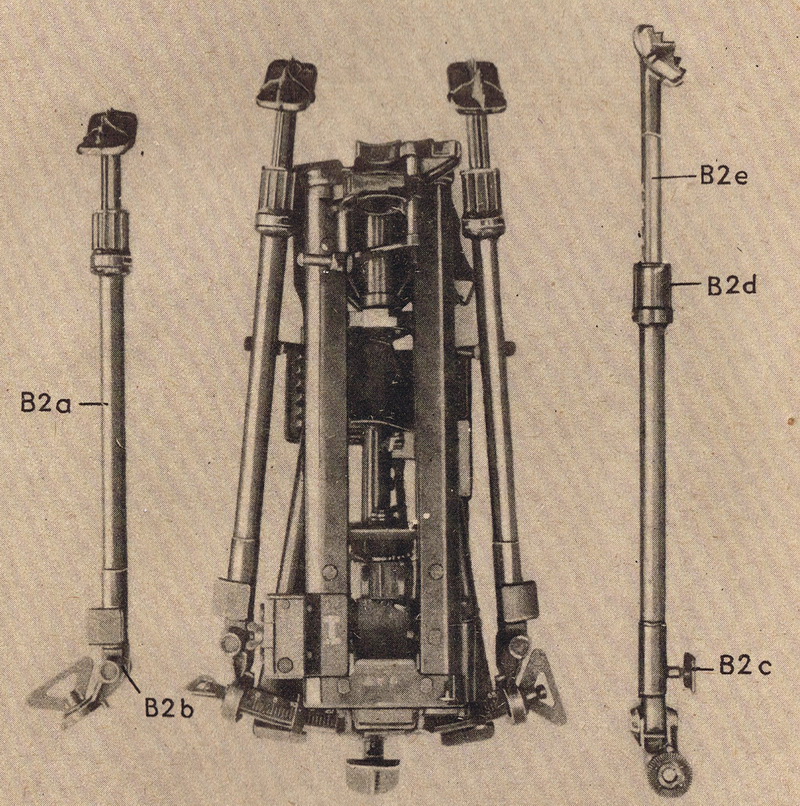 Note the painted Roman numeral "I", most probably a unit number, which implies that the Lafette pictured above was allready in use with a (most probably) training unit when the picture was taken. Another interesting information is printed in the H.DV. 181/7 Untersuchung und Instandsetzung des Infanteriegerätes, teil 7. Waffentechnisches Handbuch für MG 42, dated 3. 5. 44 MG Laf 42 neuer Fertigung erhalten ausziehbare Hinterstützen. Diese sind auch als paarweiser Ersatz für Hinterstützen a/A vorgesehen und können ebenfalls bei der MG Laf 34 verwendet werden. (The new model of the MG Lafette 42 comes with extendable rear legs. These legs are also available as replacement parts for the old pattern (a/A = alter Art) rear legs, and can also be used on the Lafette 34). The picture above is the only proof I have managed to find that the Lafette 34s with extendable legs was manufactured for the Wehrmacht in 1943. Surviving MG34 Lafettes with extendable rear legs today seems to be strictly limited to the Portuguese contract Lafette 34s. Of special note; there is an alternative set of the extendable rear legs with a different mechanism. I am not able to find any information about these, apart from their existence. See Myrvangs book for details. The Portuguese contract Sometime (I assume late) in 1943 Schluckebier halted their Wehrmacht production and started on the Portuguese contract. 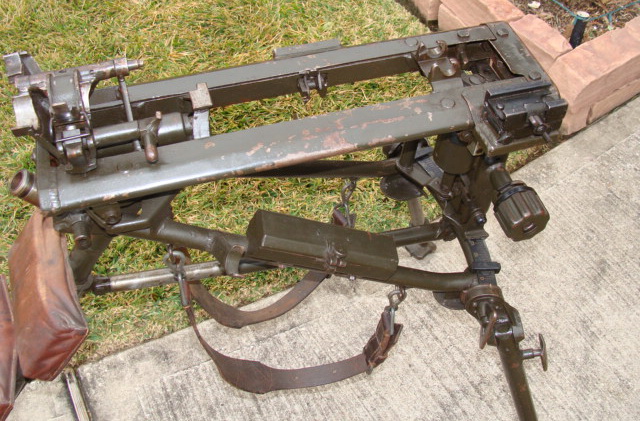 Serial number 5269h (the earliest Portuguese Lafette registered so far), owned by Ed S in TX. The Lafette above incorporates all the features that changed during 1943. Also note the aluminum selector switch for the search fire, just visible under the front of the optic mount block. The only lightweight item left in production at this time. The rear legs are of the new extendable version. The Lafette 34 production for "Die Wehrmacht" seems to have been heavily reduced by the end of 1943. The manufacturer Fouquet & Franz ended their production with the tan Lafette 34, and Schluckebier had already started on the export Lafette 34s, a production line that continued into the next year 1944 The only company still manufacturing the Lafette 34 in 1944 was Schluckebier. Due to the special circumstances around the Portuguese Lafettes a very high percentage of these have survived, while the standard Lafettes manufactured for the front were lost at high speed. All the Lafettes made for export to Portugal were manufactured by Schluckebier. They are easy to recognize by their factory applied green color.
The last change to the Lafette 34 production was the Search fire mechanism. In 1944 it was no longer made of a light alloy, with a aluminum selector switch. 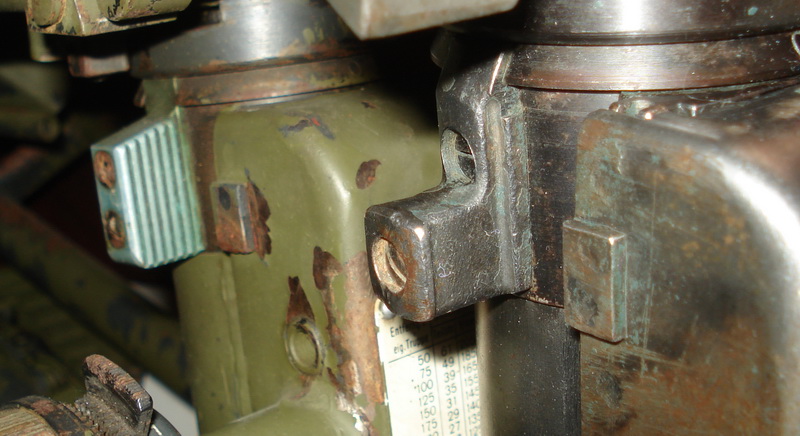 The new version was all steel. Easily recognized by the half size steel selector switch. 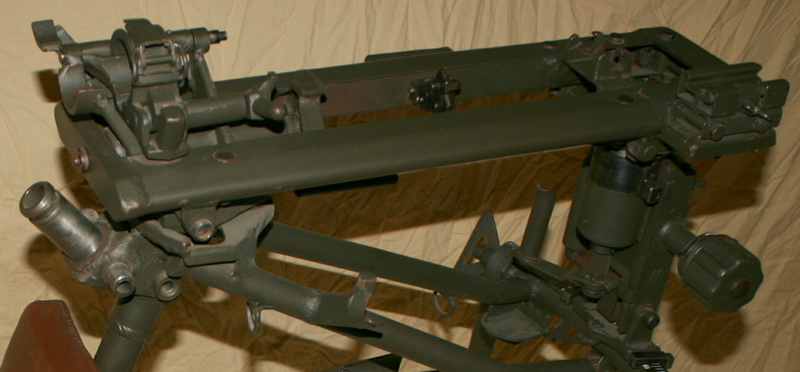 A 1944 dated Schluckebier Lafette 34. Note the steel selector switch introduced in 1944. This Lafette has a "retro" trigger mechanism of the early type. Picture courtesy of 42rocker. From the collected serial numbers of the Portuguese contract Lafettes available, there is a gap between the highest number in 1944 and the lowest number in 1943 of 671 serial numbers in the "h" block. According to Folke Myrvangs book, "MG34-MG42, German universal Machineguns", the total number of Lafettes exported to Portugal was 334 pieces. Based on this I assume that the Lafettes manufactured for export must have been made in at least two series with production for the Wehrmacht taking place in between. 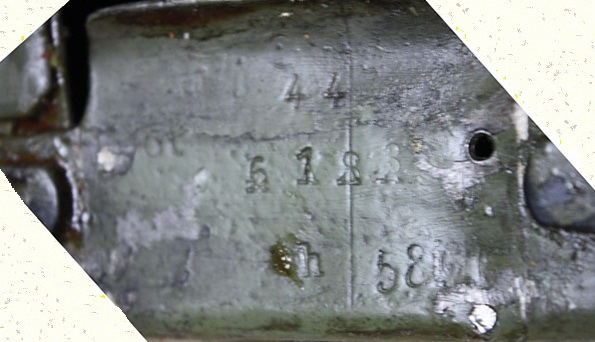 The last piece in the puzzle so far! The rear cover pictured above is marked 44/eat/6183h. It is clearly from a ex-Yugo refurbished Lafette, note the holes from the data-plate. Due to this it is unfortunately impossible to tell if it was a Lafette 34 or a Lafette 42. It indicates that the production at Schluckebier continued with deliveries to the Wehrmacht even after the production of the Portuguese Lafettes had finished. I assume that Schluckebier continued with their production of Lafette 34 until they were put out of business. The rear cover pictured above is what I believe to be one of the last Lafette 34s ever manufactured. In my next article I will take a few steps back and take a look at the Evolution of the Lafette 42 |
| Home | For sale | Site map | Contact information | Guest book | Lafette-menu |